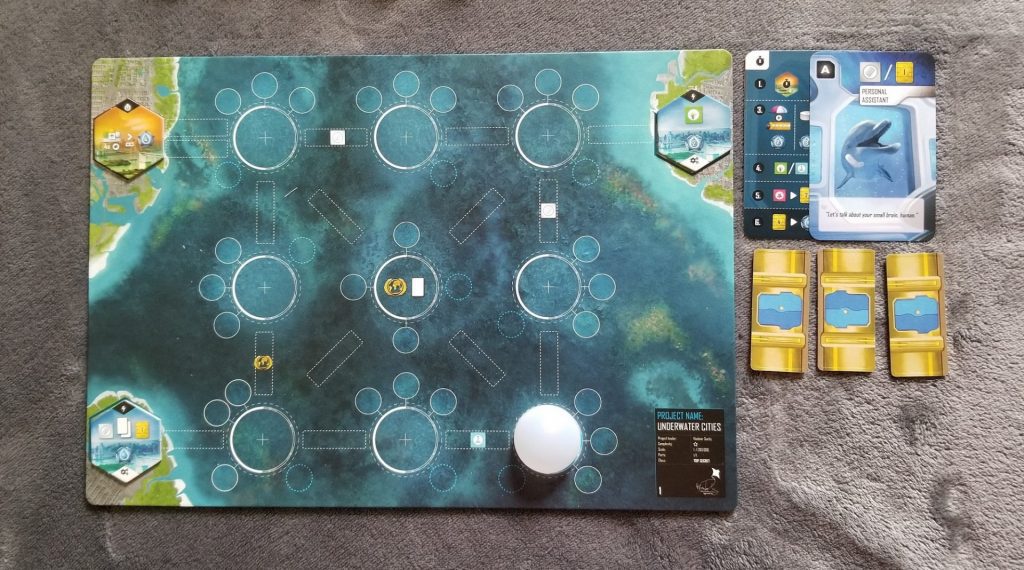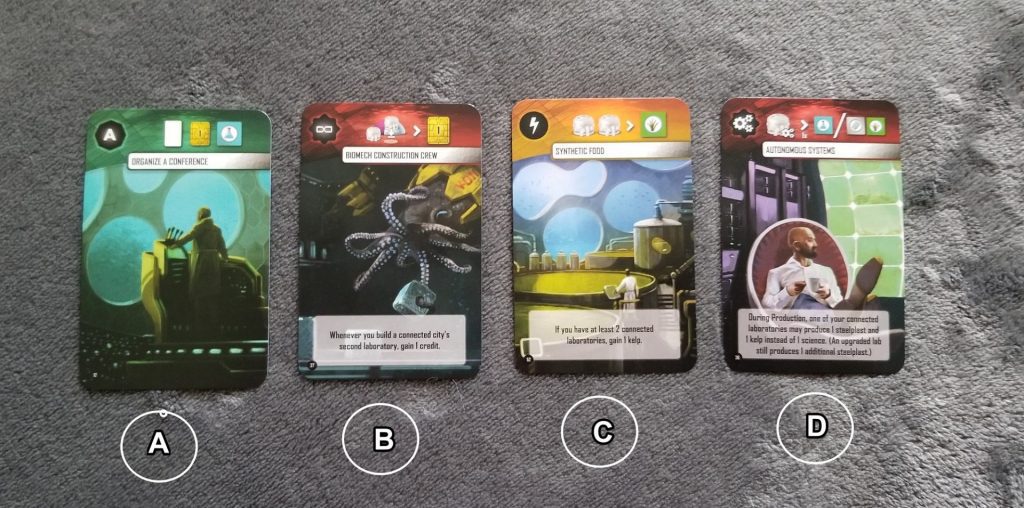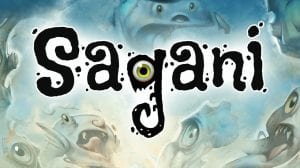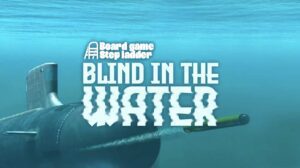What do you do when you’ve expanded far and wide and don’t have many other options? You can always go up.
And when you’ve gone up as far as you can, where to next? Well, there’s always Mars. You have to admit, outer space is about as far up as you can get.
Space: the final frontier.
Or is it?
Maybe instead of looking upwards for our inspiration, the answer to the conundrum of what to do with all of these people is right beneath our noses.
75% of the Earth is covered with water. That means that more than half of the planet’s surface area lies beneath the waves. That’s a lot of extra room, so why not build there?
And that’s what Underwater Cities—by Vladimír Suchý, designer of well-known titles such as The Prodigal’s Club, Pulsar 2849, and Praga Caput Regni—is all about. In Underwater Cities, you’ll be building cities beneath the waves, turning them into functional places to live, and guiding humanity into its future, all in the quest for those luscious victory points.
Underwater Cities is a worker placement game of tableau and engine building as well as resource and hand management. Each player will have a hand of cards that they will use to pay for the actions lined around the central game board. If the color of the card matches the chosen action, they get to perform the action on the board as well as the action on the card. If they don’t match, they only get to perform the board action. The actions on the board are how the players are going to acquire the resources they need to build things onto their player board. Those things they have built will generate resources and victory points during the production phases which occur several times over the course of the game.
The game ends after ten rounds, at which point the players tally up their scores. And, as I’m sure you may have surmised, the highest scoring player wins the game.
Of course, this is a very high level overview of the game. If you’d like to learn more about how the game is played, keep reading. Otherwise, feel free to skip ahead to the Thoughts section to see what I think about Underwater Cities.
Under the Sea
The setup for a game of Underwater Cities is going to look something like this:

In the center of the playing area is the central game board. It is pre-populated with a deck of 1 to 2 cost Special cards placed face down with the top card flipped face up. There is also a random selection of six face up 3 cost Special cards and (optionally) three randomly selected, face up Government Contract cards. The Round marker is placed at the bottom of the round track. The various resources—red biomatter, green kelp, yellow credit, blue science, and grey steelplast tokens–are kept off to the side along with the various structures—the red/white domes, the green farms, the yellow desalination plants, the white laboratories, and the tunnel tiles. Lastly, the deck of Era 1 cards is shuffled and placed face down onto its position on the board. The Era 2 and 3 decks are shuffled and set aside for now.
Players will receive a random player board (each is slightly different) flipped to either its basic or advanced side (players will use the same sides). For the purposes of this review, I will be using the basic side. Each player will also receive a random brown Metropolis token and two random blue Metropolis tokens which are placed into their positions on the player board. A white Non-symbiotic City dome is placed on top of the lower right dome position. This is the player’s Starting City. Each player also receives a player aid which breaks down building costs, building productions, and Production phase structure.

Along with the player board, players will receive the three action selection markers and 3 tokens in their chosen color. Two tokens will be placed onto the Federation track of the central board and one on the zero of the score track. The position of the Federation track tokens is determined by turn order. Depending on their position in turn order, a player may receive some extra starting goods. Regardless, every player will begin the game with 2 credits, 1 science, 1 steelplast, and 1 kelp.
Finally, each player receives the Assistant card in their color and six cards drawn from the Era 1 deck, from which they’ll choose three to keep and three to discard. Then you’re ready to begin.
Just Look at the World Around You
Underwater Cities is, at its heart, a card game. Understanding the cards you’re holding in your hand is essential to doing well. Of the cards, there are three colors—aquamarine, red, and “yellow” (it looks orange to me). Each color corresponds to the different Action colors sprinkled around the main board.
And there are four card types—Action, Permanent, Instant, and Production. Action cards are placed into a player’s tableau and there can only ever be four of them. Should a fifth one be placed, then another one must be discarded and its action can be performed on its way out (an oft overlooked, but very important, rule). Permanent cards provide their benefit whenever the criteria printed on the card is met (for instance, every time you build a tunnel something happens). Instant cards provide their benefits and are immediately discarded. Production cards provide their benefits during the Production phase. There are no limits to the amount of non-Action cards a player can have in their tableau.

The layout for every card is the same. The symbol at the top left signifies the card’s type. The iconography along the top represents what the card actually does. This information sits atop the card’s color. Beneath this is the card’s title and an illustration. It is common for players to overlap cards in their tableau to conserve space. Should a player ever forget what the iconography running along the top of the card represents, at the bottom of the card is a text box describing the iconography.
Down in the Muck Here
Underwater Cities is played over the course of ten rounds. Era 1 is composed of four rounds followed by a Production phase. Eras 2 and 3 consist of three rounds followed by a Production phase each. At the beginning of a round, the player turn order is altered based on each player’s position on the Federation track. Then the Federation track is cleared off.
Each round consists of three player turns each. On a player’s turn, they will first discard down to three cards. Then they will place an action selection marker on any open action space on the main board and discard a card to pay for the action. As mentioned previously, if the color of the card matches the color of the selected action, the player can use the card action in addition to performing the board action.

After they’ve performed their action(s), they will draw a card from the Era deck, bringing their turn to an end. The board actions they can select from allow them to gain resources or cards, construct buildings or tunnels, upgrade existing structures, construct new domes, gain additional cards, move on the Federation track, or some combination thereof. If playing with the optional Government Contract cards, the first player to meet the criteria on one of the cards can claim the card to receive its bonus.
We Got the Bubbles
Underwater Cities isn’t just a card game, though. It’s also a tableau builder and that tableau extends beyond just the cards a player has played. As the game begins, a player’s mat is pretty barren, consisting of a single Non-symbiotic City dome, but as actions are selected and cards are played, this tableau will grow and change.
Each structure a player constructs will earn them something during the Production phases. Tunnels and desalination plants produce credits, laboratories produce steelplast, and farms produce kelp. The trick is that, with the exception of tunnels, these buildings only produce things if they are constructed around a city dome and only if that city dome is connected via a network of tunnels back to the player’s Starting City. A farm can be built out in the middle of nowhere, for instance, but it’s not going to produce anything unless there are actual people around to work it.
Upgrading your constructions help them produce even more. Upgraded…
… tunnels produce credits and victory points.
… farms produce kelp and victory points.
… desalination plants produce credits and biomatter.
… laboratories produce science and steelplast.

Multiples of the same type of upgraded building around the same dome produce even more than that. Biomatter is used to construct Symbiotic cities (red domes) and these produce two victory points each during production. Lastly, building a series of tunnels that connect to a metropolis will reward the player with an instant reward and possibly even a reward during each Production phase.
We Got a Hot Crustacean Band
End game victory points come from several directions and knowing where they come from will influence the decisions a player makes during the game. For instance, each city dome is worth points all by itself, but is worth additional points based on the number of different types of buildings there are connected to it. A barebones city dome is worth 2 VP, but a city dome with at least one of each different type of building surrounding it is worth 6!
Points are also earned from a player’s brown metropolis (if they were able to connect to it), End-scoring cards (providing the criteria was met), and leftover resources. Leftover biomatter is sold for 2 credits each. Then, victory points are purchased at a 4 resources:1VP rate. Two kelp, one science, and one credit can be traded in for 1 VP, for instance).
Thoughts
Last year, I began designing a game. It didn’t take long for that game to turn into something other than just a thing I was doing to pass the time. It became something I obsessed about from the moment I woke up to the moment I went to sleep. When I wasn’t actively awake working on it or thinking about it, I was dreaming about it. It became all-consuming. And for a while, it was the only game I thought about incessantly.
Then I met Underwater Cities.
First, let me tell you about how the game looks. The graphic design and artwork in this game are stellar. Uildrim and Milan Vavroň have done a fantastic job of bringing Vladimír Suchý’s vision to life. The illustrations are bright and vivid, the graphic design consistent and easy to understand. Even the layout of the rule book leaves nothing to be desired.
But it isn’t until you play the game that your mind is well and truly blown. In Underwater Cities, Vladimír Suchý has achieved something masterful. Every decision matters. Every Era flows by smoothly. There’s nothing clunky to be found anywhere. Everything is well balanced. No single action is too over or under-powered. No card is out of place with each providing just the right amount of oomph to keep your engine growing and chugging along. And then there’s the brilliant decision to have players discard at the beginning of their turns rather than the end. This gives the players something to do with their downtime and that goes a long way towards making each player feel engaged. Engagement is key in a game like Underwater Cities where there’s always a lot to consider.
It’s certainly kept me engaged. When I’m not actively playing Underwater Cities, I’m thinking about the next time I’ll get to play it. Now that it’s been added to Yucata, I can play it whenever I want and I typically have multiple games of it going at the same time. I write notes to myself. I analyze each game I win to determine what I did right and I mull over each game I lose, trying to figure out where I went wrong. I live, breathe, and eat Underwater Cities. Underwater Cities courses through my veins. It’s just THAT GOOD of a game.
Last year, I began designing a game and for a while, it was the only game I thought about incessantly.
Then I met Underwater Cities. And now there are two.












Add Comment